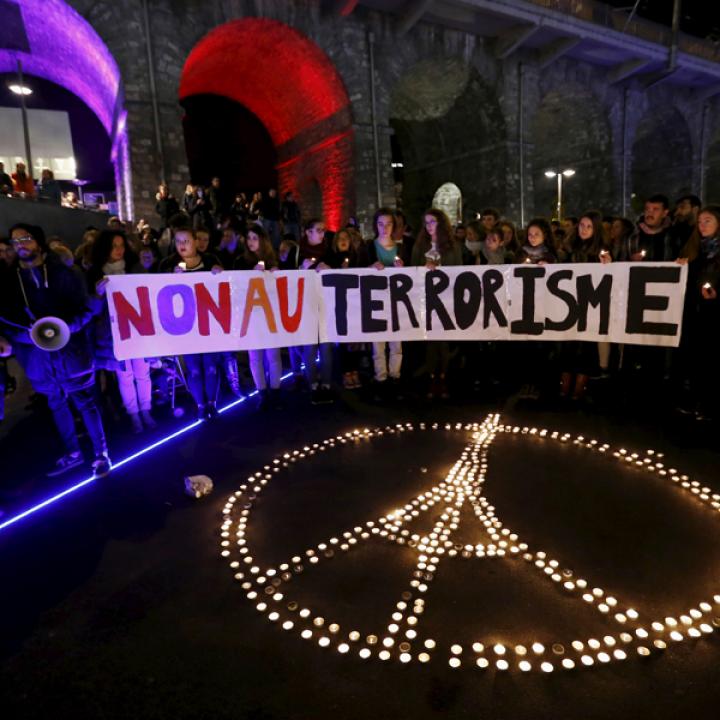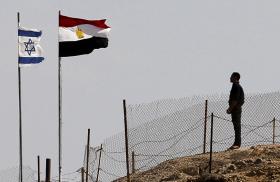

Part of a series: Counterterrorism Lecture Series
or see Part 1: U.S. Efforts against Terrorism Financing: A View from the Private Sector
As authorities scramble to prepare for the ways in which the Islamic State threat will continue to evolve, many lessons can be learned by looking at the factors that led to its rise. This seventh volume of Counterterrorism Lectures traces ISIL's evolution during 2015.
Bookended by terrorist plots in Paris, 2015 marked the rise of the so-called Islamic State as an international terrorist phenomenon. Spectacular attacks in Paris, Brussels, Istanbul, and beyond have made it plain that the scale of the threat posed to the West is far larger than most had previously thought. And this threat is no longer limited to potential lone-wolf plots by homegrown extremists, nor to the radicalization of the 5,000-plus European citizens who left to fight alongside the Islamic State in Syria, Iraq, and more recently Libya. Indeed, these recent attacks have made it painfully clear that the Islamic State is determined to plan and direct attacks in the West that are far more sophisticated and lethal than such small-scale mayhem.
The seventh volume in The Washington Institute's Counterterrorism Lectures series spans the period from January 2015 to November 2015 and includes presentations by the following speakers (positions listed were those held at time of presentation):
- GEN. JOHN R. ALLEN, USMC (ret.), special presidential envoy for the Global Coalition to Counter ISIL
- AVERY ALPHA, director of counterterrorism for Syria, Turkey, and Egypt, National Security Council
- RICHARD BARRETT, former head, UN Monitoring Team concerning al-Qaeda and the Taliban
- JACOB BUNDSGAARD, Lord Mayor of Aarhus, Denmark, prominent in the “Aarhus model” radicalization rehabilitation program
- JENNIFER FOWLER, deputy assistant secretary for terrorist financing and financial crimes, Treasury Department
- DAVID GERSTEN, countering violent extremism coordinator, Department of Homeland Security
- TINA S. KAIDANOW, ambassador-at-large and coordinator for counterterrorism, State Department
- GILLES DE KERCHOVE, counterterrorism coordinator for the European Union
- HEDIEH MIRAHMADI, president, World Organization for Resource Development and Education
- NICHOLAS J. RASMUSSEN, director, National Counterterrorism Center
- GERALD ROBERTS, Jr., section chief, Terrorist Financing Operations Section, FBI Counterterrorism Division
- ELIZABETH ROSENBERG, director, Energy, Economics, and Security Program, Center for a New American Security
- SARAH SEWALL, under secretary of state for civilian security, democracy, and human rights
- MAJ. GEN. DOUG STONE, USMC (ret.), developer, Rome Memorandum on Good Practices for Rehabilitation and Reintegration of Violent Extremist Offenders
- CLINT WATTS, senior fellow, Foreign Policy Research Institute
- AARON Y. ZELIN, Richard Borow Fellow, The Washington Institute
As authorities scramble to prepare for the ways in which the Islamic State threat will continue to evolve, many lessons can be learned by looking at the factors that led to its rise in 2015. This volume is an excellent place to start.
THE EDITOR
Matthew Levitt is the Fromer-Wexler Fellow and director of the Stein Program on Counterterrorism and Intelligence at the Washington Institute. He is a former deputy assistant secretary for intelligence and analysis at the U.S. Department of the Treasury as well as a former State Department counterterrorism advisor to the special envoy for Middle East regional security. Dr. Levitt is the author of a number of highly acclaimed studies, most recently Hezbollah: The Global Footprint of Lebanon's Party of God.
Counterterrorism Lecture Series, Vol. 7







